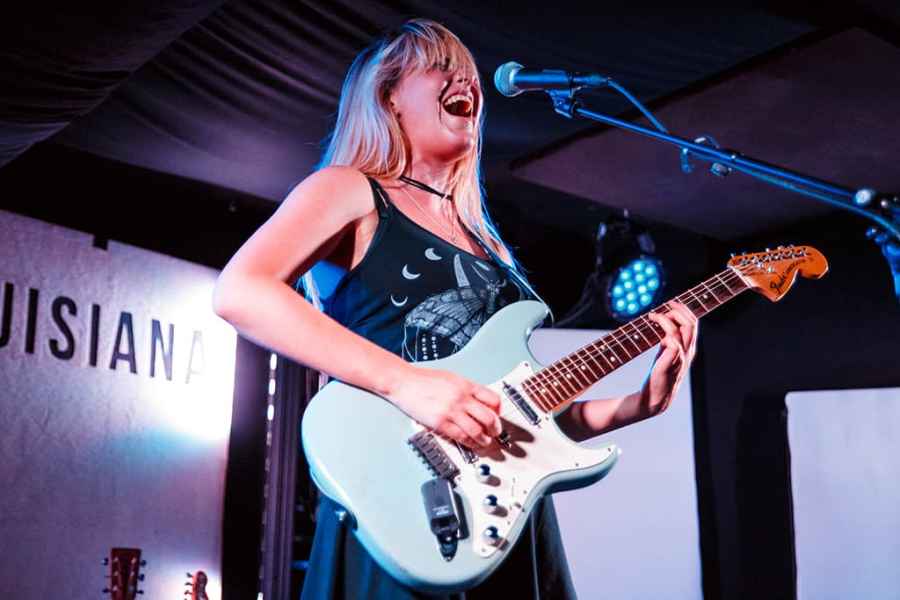Now gigs and other live performances are coming back after the worst time for musicians since the last war, it’s time to brush up on your band photography skills!
Even if you are more into gentle acoustic rather than Iron Maiden, the core principles of live music photography apply, and you may be able to take some really great shots of memorable events (the performers might really like them too, and ask you back to shoot them again).
With this in mind, accomplished music photographer Shona Cutt reveals her top tips for taking great shots at smaller gigs – which are generally much more relaxed about people taking photographs anyway, unless you are lucky enough to get a photo pit pass for a very big event.
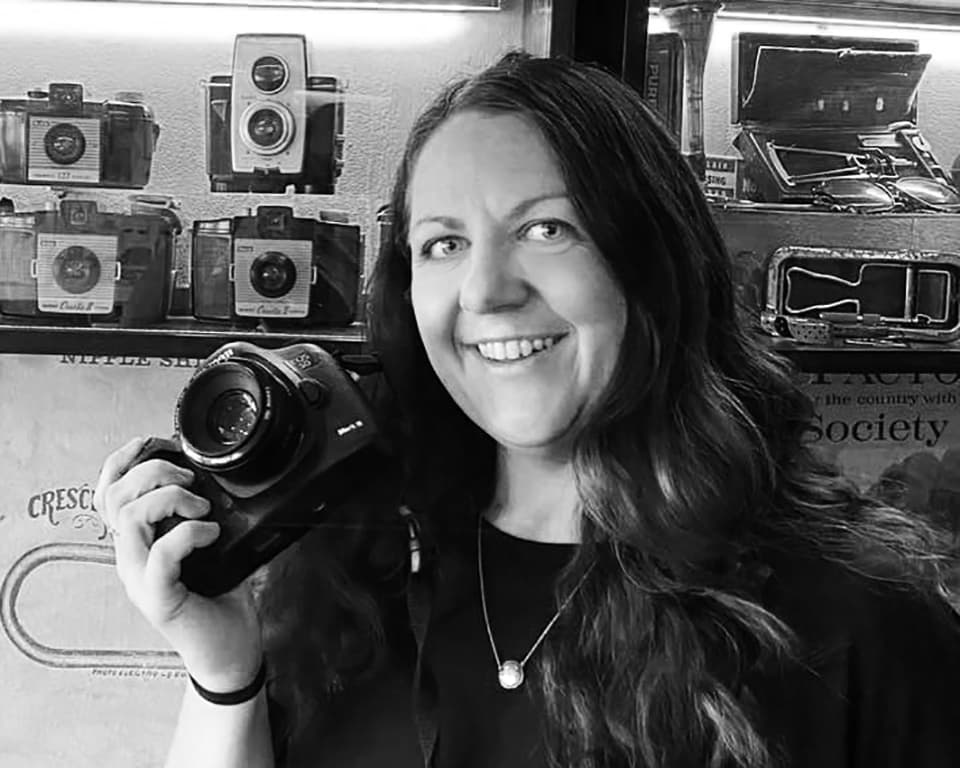
Your guide: Shona Cutt
Graphic designer by day and music photographer by night, Shona is based in Bristol and regularly shoots bands for reviews in a wide range of media. She has shot the Foo Fighters, Soundgarden, Bryan Ferry and Gary Numan, as well as touring with The Answer. See her Instagram page and website: www.shonacutt.co.uk
Get the fastest lens you can afford
I use a Sigma 24-70mm f/2.8 bought second hand 11 years ago. It was all I could afford at the time but still works really well. I also hire a 70-200mm f/2.8 lens as needed. Being able to shoot at a wide aperture makes life much easier as the light often changes all the time – you combine it with a higher ISO and faster shutter speed, as required. I also have a Canon 50mm f/1.8 which I take to gigs, but mainly use for band portrait shots (see below).

Watch out for mics, monitors, stage furniture, signs…
Standing in front of centre stage is usually the best place for photos but that is where the singer often stands too – so be very careful their face is not covered by the mic or mic stand.
There is no point a having nice shot of the singer if you can’t see their face, and it’s the same with other musicians. Also avoid mic stands and other items sticking out of the band’s heads unless you can edit them out, but it’s easier to get as much right as you can in-camera.
So take your time and don’t get too trigger happy. Watch out for exit and toilet signs in smaller venues too – nobody wants to be shot with a toilet sign over their head!
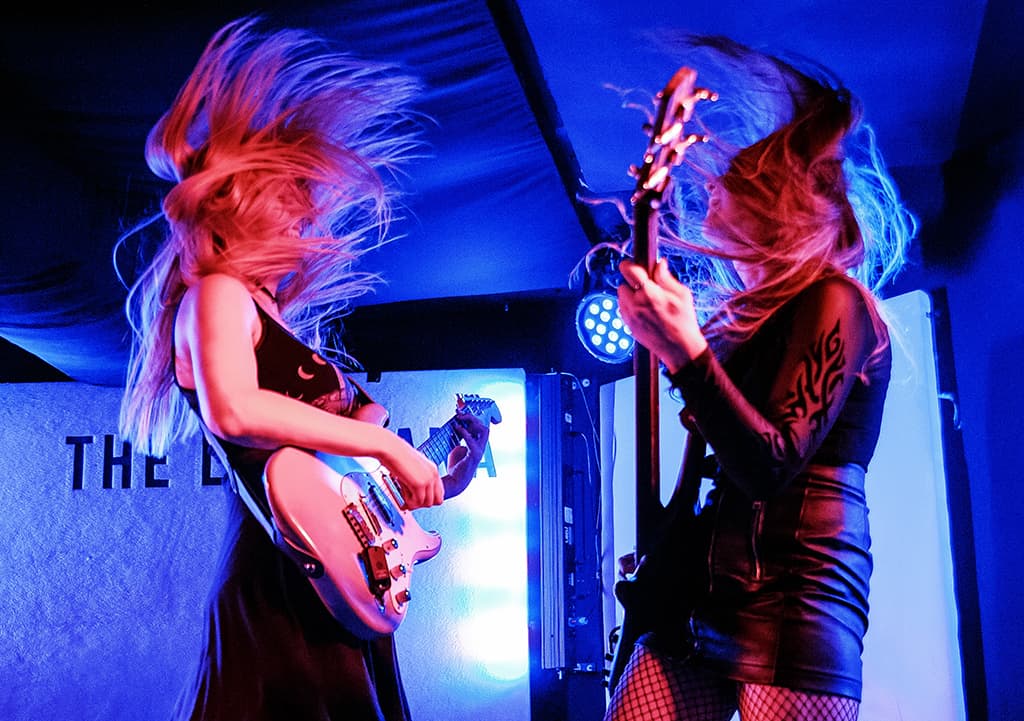
A noisy shot is better than a soft one
Higher ISOs are usually essential in smaller venues. I will happily shoot at ISO 6400 and sometimes higher. It’s always better to have a noisy shot than a slightly blurry one.
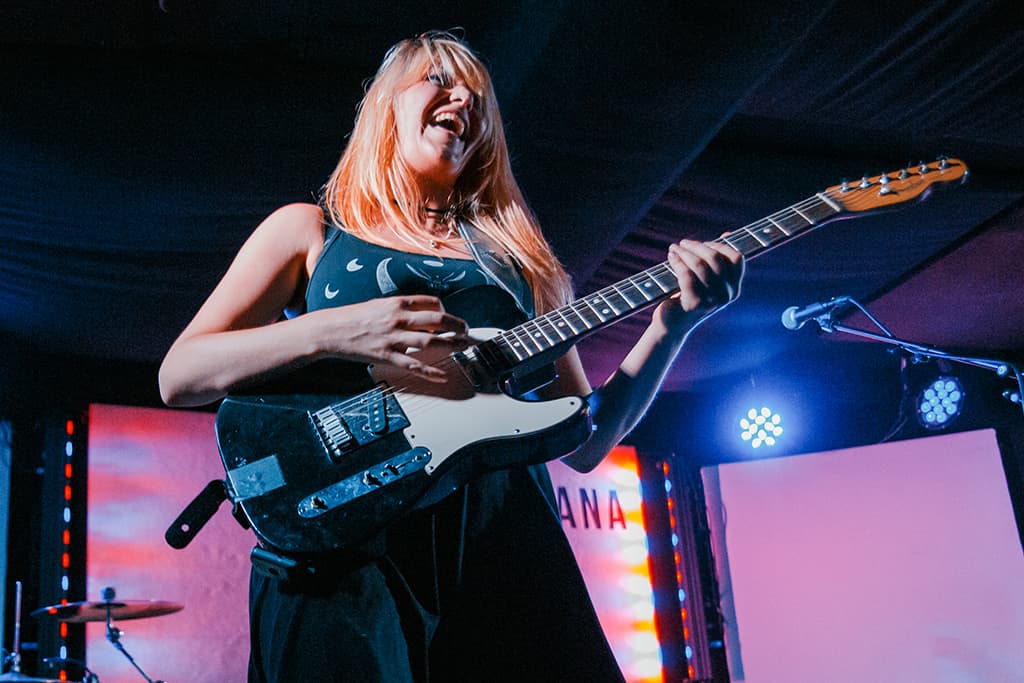
Anticipate the action
Listen to the music carefully so you can anticipate where it sounds like there will be a guitar solo or the singer will hit a long note. You might be able to listen to the band on YouTube etc before the actual gig so you are prepared.

Don’t forget the drummer
Drummers are the hardest to shoot, as they are at the back of the stage, and don’t tend to have much light on them. But they are the engine room of the band and just as important as the singer or guitarist.
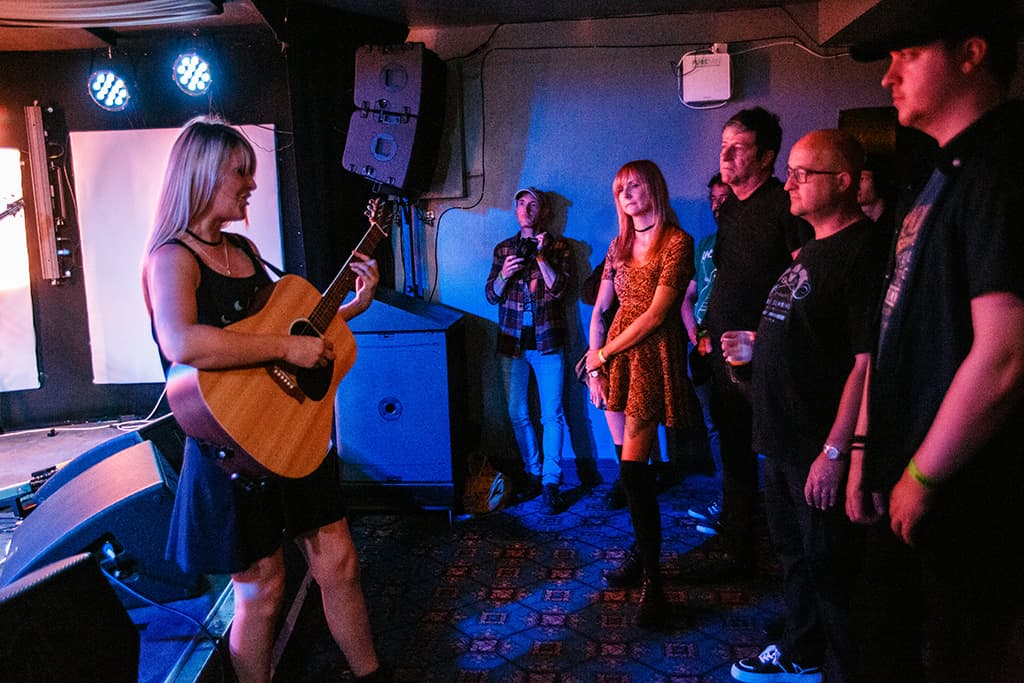
Respect the crowd
Paying punters are the most important people there, as the band would not be performing without them. So try not to get in anyone’s way. Get to venues as early as you can to find a decent spot. Once you have got the shots you need, move around a bit, which helps other photographers present. Chat to the crowd; once they know they are not trying to push in front of them, most of time they will help you as long as they know you are not there for a long time.
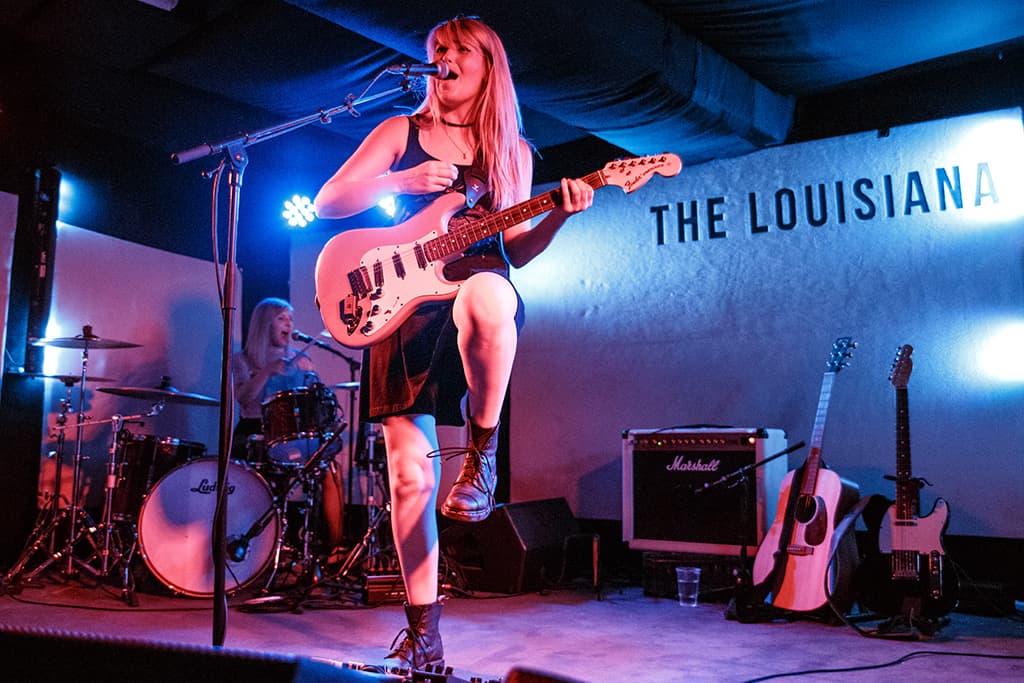
Autofocus tips
I use AI Servo AF on my Canon EOS 5D Mark III to track moving subjects; it’s essential for high-energy bands. I use silent continuous shooting as well if somebody is headbanging, so you get a burst of shots in one go!
Which shooting mode?
I shoot in Manual as I can control both aperture and shutter speed – I don’t like the shutter speed to drop below 1/250th sec. It depends on whether it’s an active band or not, however. With an acoustic performer, I will go down to 1/125 sec, so it depends
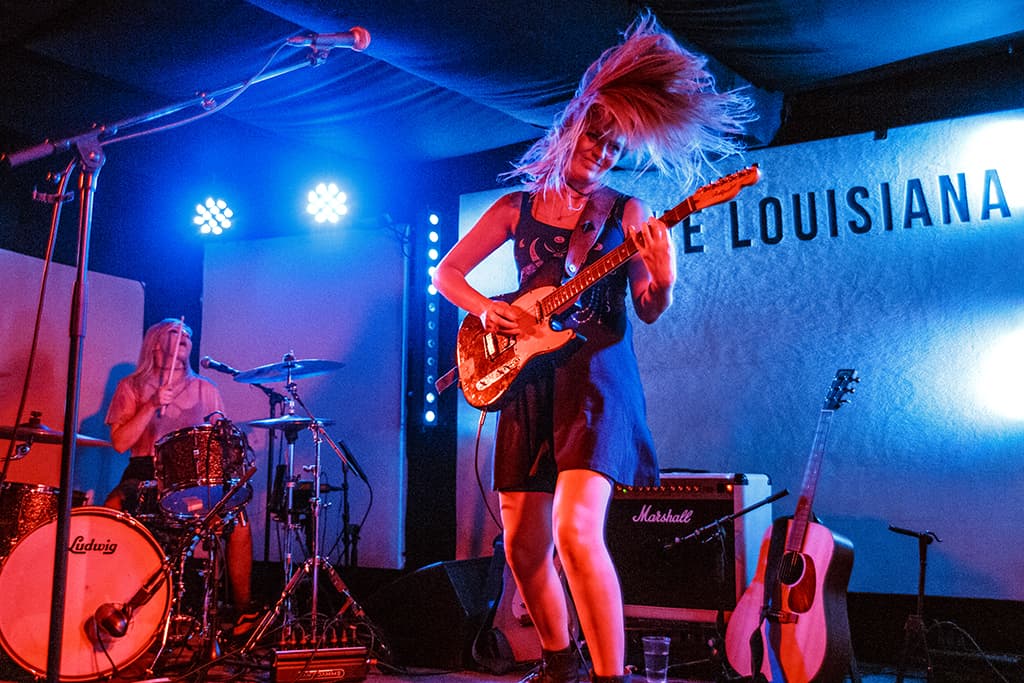
Metering tips
I like to switch to spot metering as it makes it easier to take a very specific reading based on where you are focusing, and avoid blowing out highlights – a real risk with gig photography. As you shoot more and more gigs you figure out the best settings for you.
Shoot the support bands
This is a good way to get practice and experience. It can be easier to develop contacts with smaller bands and they might get big one day! The Stones were a support band once…
Portrait or landscape?
If I am taking shots for a gig review, websites usually want shots in landscape format. But sometimes shooting portrait format can be a useful way to avoid stage furniture and clutter.
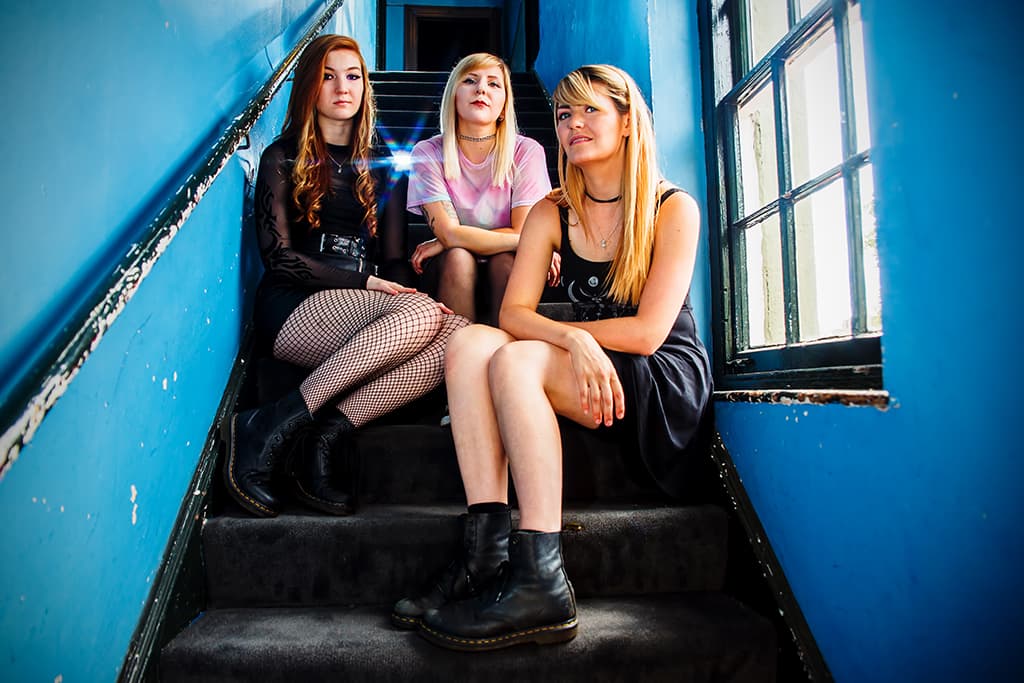
Try band photoshoots
If you’re interested in doing band photoshoots, a great way to get started is doing quick shoots with musicians before the gig. For this shot with Rews, we used the stairs at the back of the venue. I used two off-camera Speedlites with a Gobe Star filter on my Sigma 24-70mm lens.
Thanks to the band Rews for taking part in this article.
Further reading
How to photograph live music (by Iron Maiden’s official photographer)

